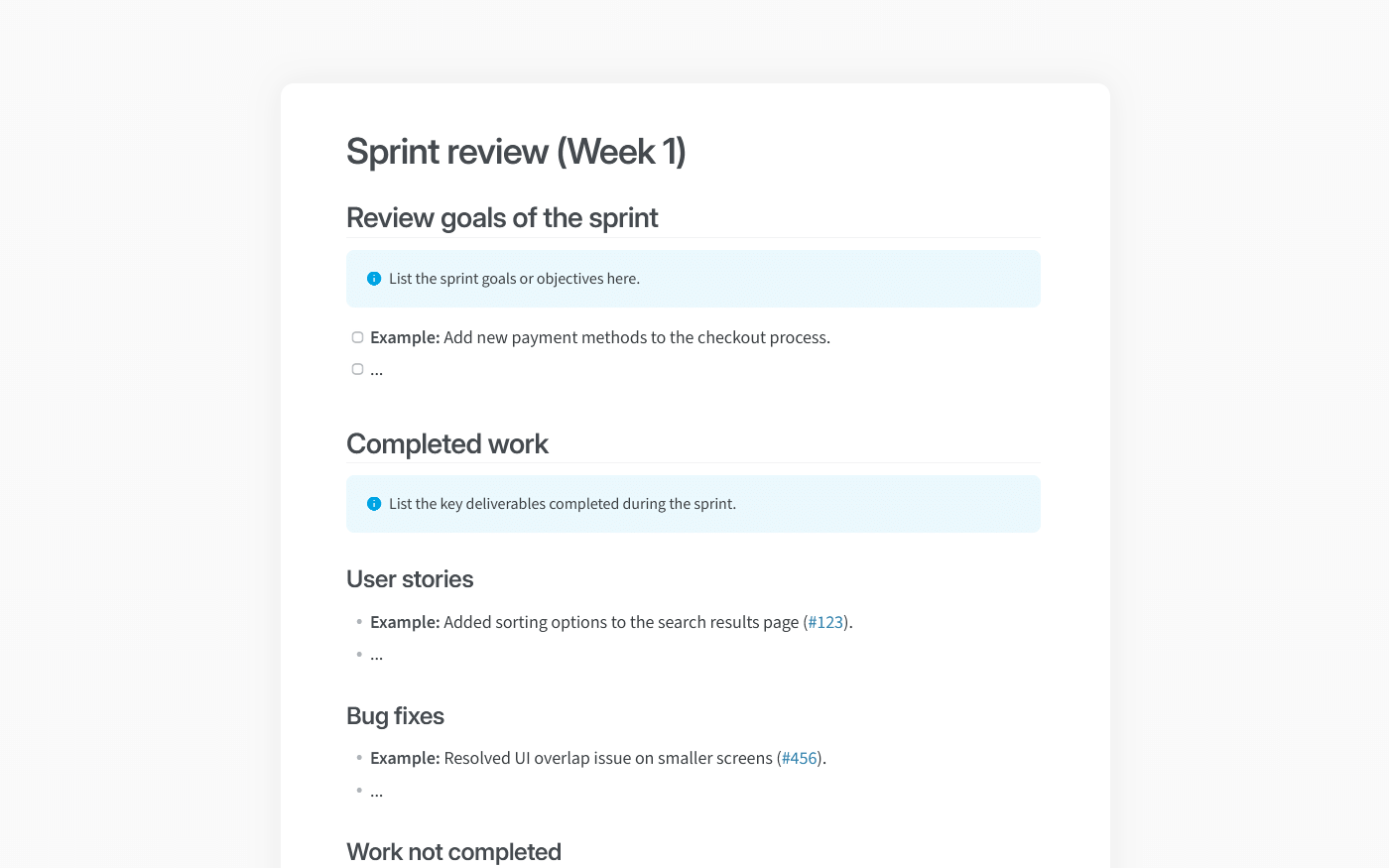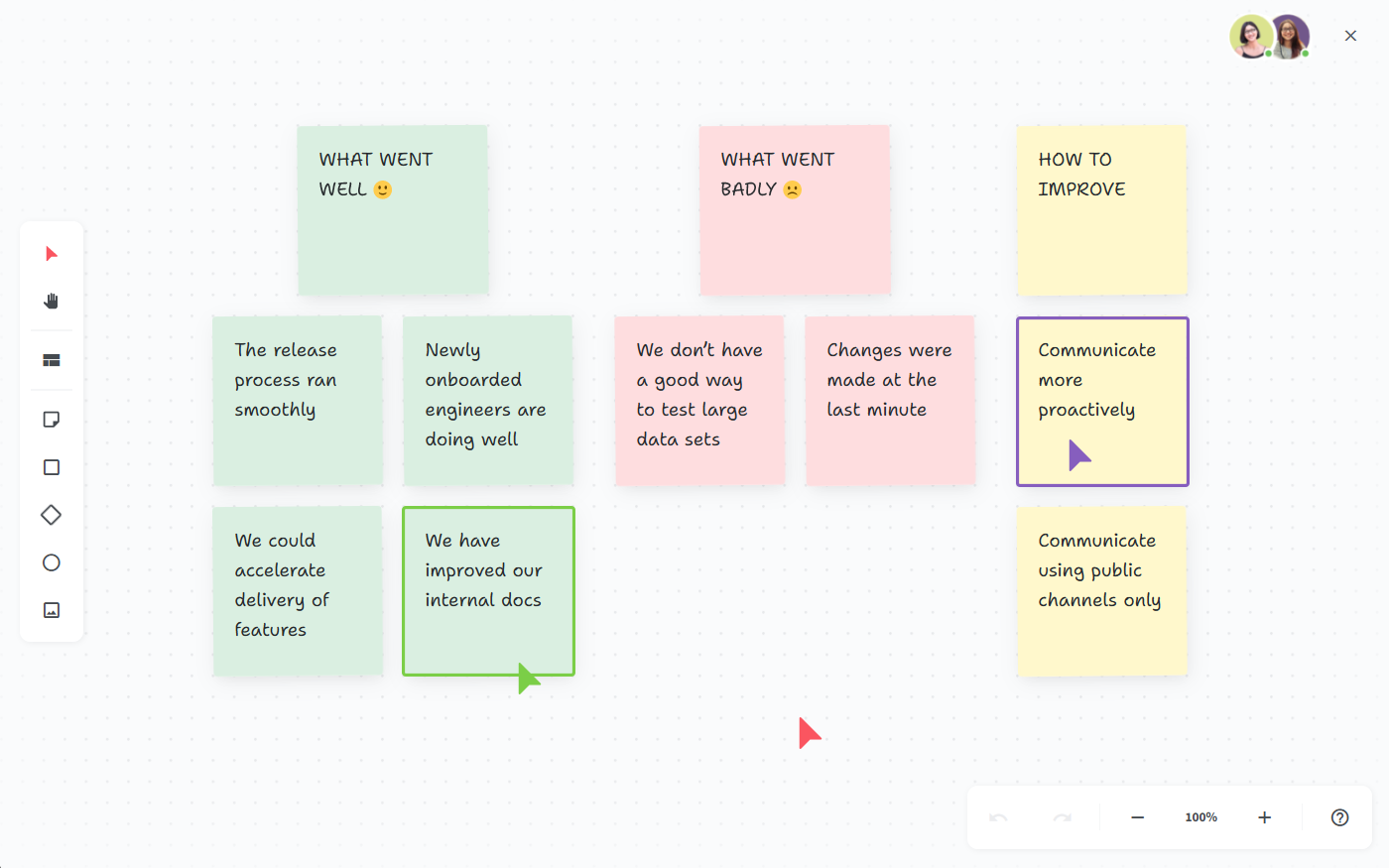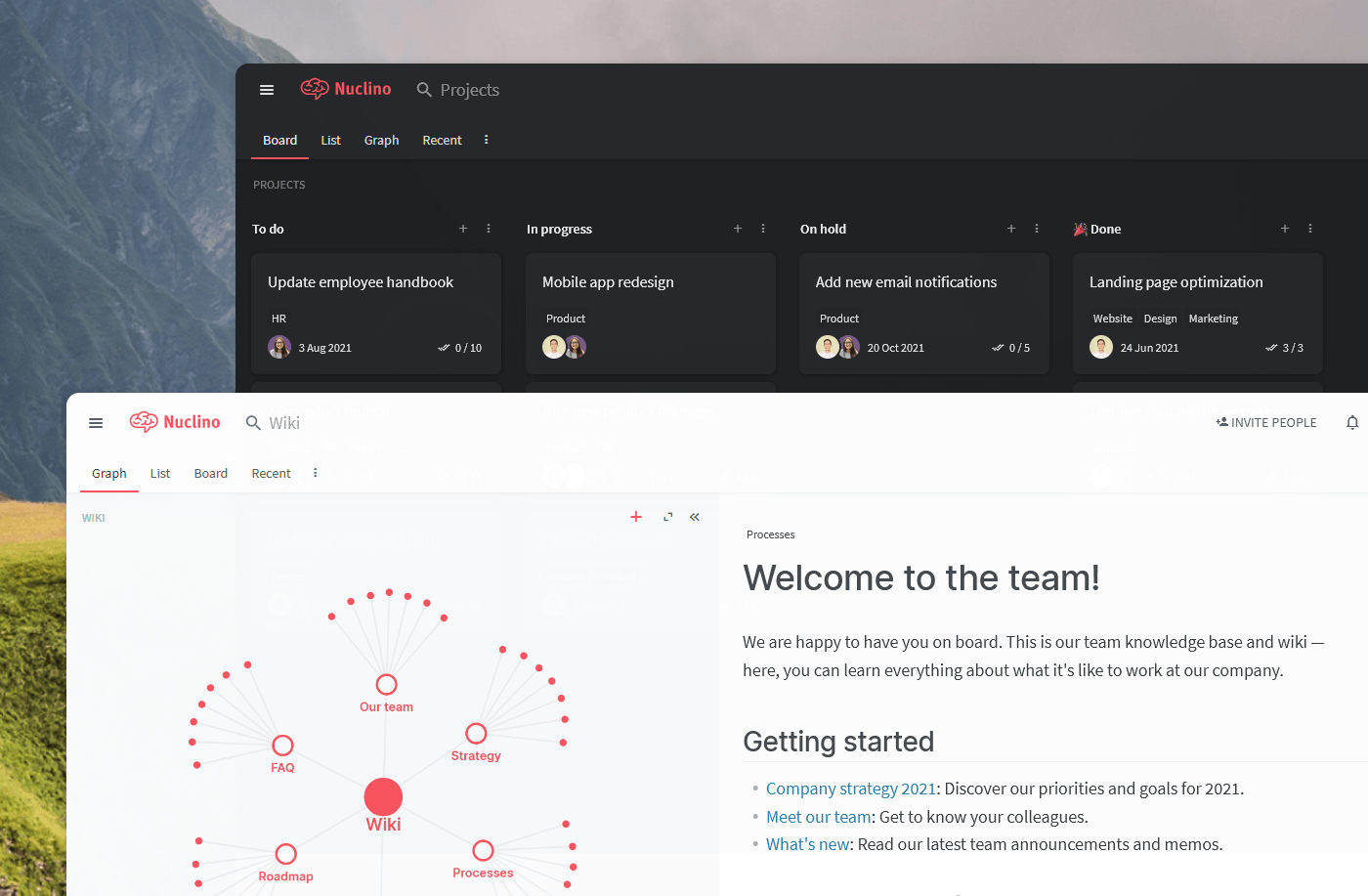What is a Sprint Review? Definition, Purpose, and Template
Learn how to properly examine the work accomplished during a sprint.
According to the Scrum product management framework, a sprint consists of four events: sprint planning, daily standup, sprint review, and sprint retrospective. All four are equally important for a successful sprint.
In this article, we will take a closer look at what a sprint review is and how it should be run.

What is a sprint review?
A sprint review is an informal meeting held at the end of a sprint, during which the team shows what was accomplished, while the stakeholders provide feedback. It's a collaborative working session rather than a one-sided presentation.

Here's an example of what a documented sprint review can look like in Nuclino, a unified workspace for all your team's knowledge, docs, and projects.
You can use Nuclino to plan and review your sprints, build your internal knowledge base, onboard new employees, take meeting minutes, communicate asynchronously, and more. It works like a collective brain, allowing you to bring all your team's work together in one place and collaborate without the chaos of files and folders, context switching, or silos.

Visual collaboration is seamlessly built into Nuclino, allowing you to add an infinite collaborative canvas to any design brief. You can use it to create diagrams and flowcharts, brainstorm ideas using sticky notes, and much more.

Sprint review participants
The attendees of a sprint review usually include the product owner and product manager, the Scrum Master, the development team, the management, various business stakeholders, and anyone else involved in the product management process.
Sprint review timebox
Like all meetings, a sprint review needs to be strictly timeboxed. It typically lasts between thirty minutes and three hours, depending on how long your sprints are. For example, if you are using one-week sprints, the meeting should last no longer than one hour.
A sprint review can also be conducted asynchronously, without a fixed timebox. In this case, sprint results can be presented using a video recording tool like Loom, and stakeholders can provide their feedback in writing.

Sprint review purpose
A sprint review is more than just a demo session held to provide a routine status update. The main purpose of a sprint review is to inspect the outcome of the sprint, collect feedback from all the stakeholders, and adapt the backlog going forward.
When done right, a sprint review can help you create transparency, foster collaboration, and generate valuable insights.
Sprint review vs sprint retrospective
The sprint review meeting takes place before the sprint retrospective. These two meetings may sound similar, but they have very different goals.
In a nutshell, the sprint review is a discussion about what the team is building, while the retrospective is focused on how they’re building it. More specifically, there are three main differences between these two meetings:
Participants. Sprint reviews involve a variety of different stakeholders, anyone related to the product. Sprint retrospectives are intended for the Scrum team and no one else.
Deliverables. The main output of a sprint review is an updated product backlog. On the other hand, the core deliverable of a sprint retrospective is a list of action items intended to improve the Scrum team's workflow during the next sprint.
Goals. A sprint review is carried out with the goal of reaching alignment between the scrum team and product stakeholders. The purpose of a sprint retrospective is to continuously improve team performance from sprint to sprint.
In short, while sprint reviews exist to help you consistently meet customer expectations, sprint retrospectives help your Scrum team get things done faster and more efficiently. While some teams prefer to merge sprint reviews and retrospectives into a single hybrid meeting, it's strongly recommended to keep them separate.
Sprint review meeting agenda
Whether you prefer to conduct your sprint reviews in-person or asynchronously, make sure to prepare the meeting agenda in advance and take meeting minutes. Having a written record of your sprint reviews helps you preserve the context of every decision and makes it easier for remote, absent, or newly joined team members to stay in the loop.
There is no strict format for the sprint review meeting, but it usually begins with revisiting the goals of the sprint. The product owner explains the backlog items that have and haven’t been completed during the sprint. After that, the development team demonstrates the work that was done, answers questions, and receives feedback. Finally, the whole group collaborates on the next steps, providing valuable input for the upcoming sprint planning meeting.
The sprint review meeting agenda typically includes the following topics:
Sprint goal review. What did we set out to accomplish? What was accomplished? What is still unfinished?
Demonstration. What was built? How does it work?
Feedback. What feedback or questions does the rest of the team have?
Release plan. What is the current release plan? What are the expected delivery dates?
Discussion. Do we need to make changes to the plan?
Next steps. What tasks should come next?
Sprint review template
A sprint review is a recurring meeting, so having a template can be a great way to ensure consistency and save time. Here's an example of what a sprint review template may look like:

One of the key tenets of effective team communication is to treat meetings as a last resort and make time for deep work. But that doesn't mean that all meetings are a waste of time, and sprint reviews (when done right) can be vitally important to your team's workflow. It's a unique occasion to pause, reflect, and celebrate the team’s accomplishments; gather valuable feedback to inform future sprints; and enable the team to go forward with a shared purpose.
Nuclino: Your team's collective brain

Nuclino brings all your team's knowledge, docs, and projects together in one place. It's a modern, simple, and blazingly fast way to collaborate, without the chaos of files and folders, context switching, or silos.
Create a central knowledge base and give your team a single source of truth.
Collaborate in real time or asynchronously and spend less time in meetings.
Manage and document your projects in one place without losing context.
Organize, sort, and filter all kinds of data with ease.
Integrate the tools you love, like Slack, Google Drive, Figma, Lucidchart, and more.
Ready to get started?
